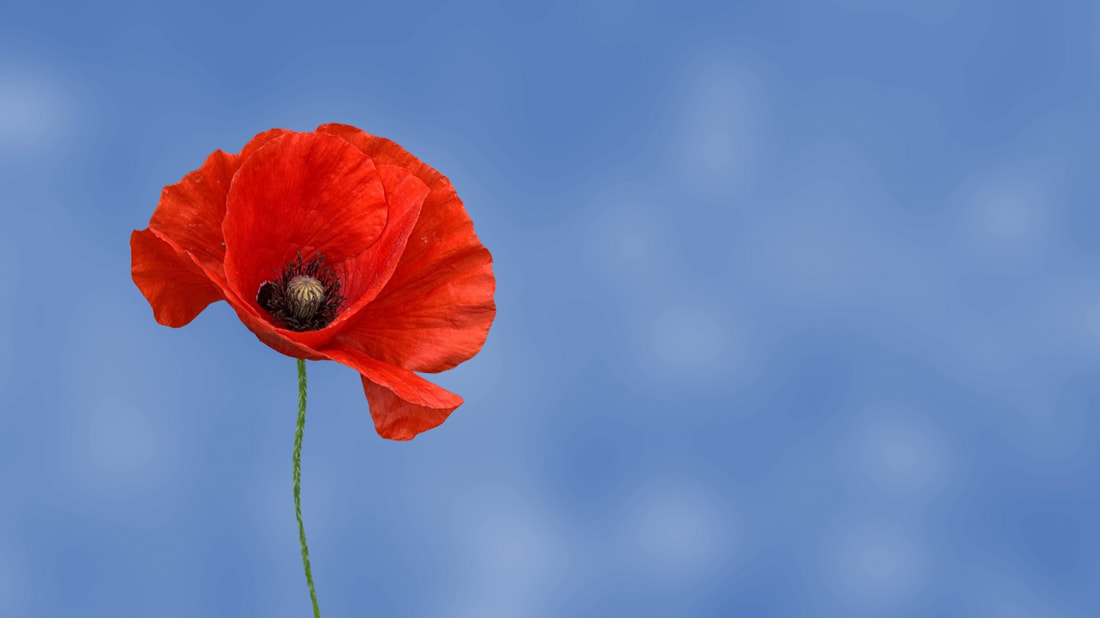|
“In Flanders fields the poppies blow
Between the crosses, row on row . . . If ye break faith with us who die We shall not sleep, though poppies grow In Flanders fields.” - John McCrae, 1915 After World War I, poppies were strewn on graves and planted in parks in memory of the war dead. Three “poppy ladies” created a lasting tradition. Moina Michael (U.S.): The Georgia teacher helped rescue stranded Americans from Europe after war broke out, trained overseas YWCA workers, taught disabled servicemen, and wore a red memorial poppy. The American Legion Auxiliary adopted her proposal to sell silk poppies for funds to help disabled veterans. Anna A. Guérin (France): After a speaking tour of the U.S. to raise money for French war orphans, Guérin organized French widows to make artificial poppies to support widows and children. The Veterans of Foreign Wars helped distribute them in the U.S. and later arranged to include American disabled veterans in the labor and benefits. Lillian Bilsky Freiman (Canada): Called the most influential Jewish-Canadian woman of her generation, Freiman organized sewing circles to clothe soldiers, found Canadian homes for Jewish orphans from Ukraine, opened a hostel for veterans, and helped set up job sites for veterans to make furniture and toys. She introduced Canadian poppy campaigns like those in the U.S. and France. “. . . Fear not that ye have died for naught; We’ve learned the lesson that ye taught In Flanders’ fields.” Moina Michael, 1918
4 Comments
Marie Mize
3/22/2024 03:31:27 pm
Thank you for mentioning Miss Moina, Madame Guerin and Ms Freiman. Miss Moina is from my state of Georgia and we are proud of the work she did to help veterans and to convince the American Legion to adopt the poppy as a symbol of reemberance.
Reply
3/22/2024 06:56:27 pm
An important influence for a significant cause. Georgia can be justifiably proud of her.
Reply
Leave a Reply. |
AuthorI'm a historian who writes novels and literary nonfiction. My home base is Madison, Wisconsin. Archives
July 2024
|

 RSS Feed
RSS Feed